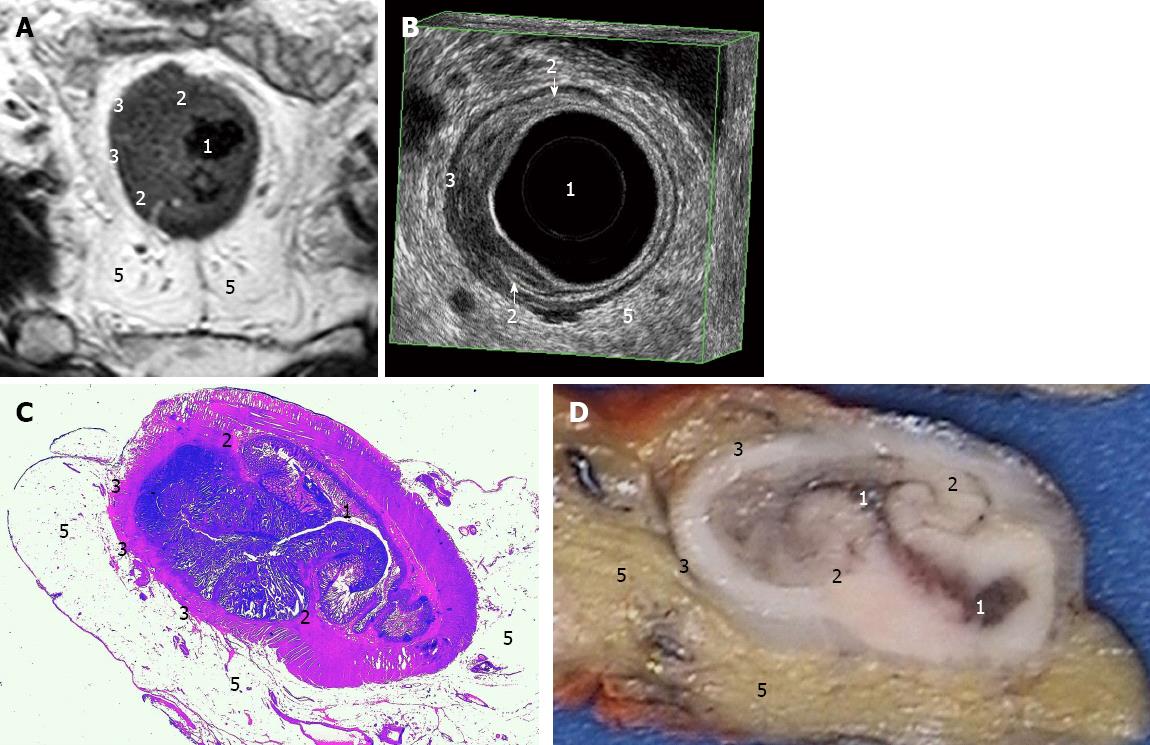Copyright
©2013 Baishideng Publishing Group Co.
World J Gastroenterol. Jun 7, 2013; 19(21): 3263-3271
Published online Jun 7, 2013. doi: 10.3748/wjg.v19.i21.3263
Published online Jun 7, 2013. doi: 10.3748/wjg.v19.i21.3263
Figure 3 Images of a stage I (T2N0) rectal tumour.
The numbers denote the bowel lumen (1), the submucosal layer at its interruptions (2) and the smooth interface (3) between the muscularis layer and the perirectal tissue (5). A: Magnetic resonance imaging gives a good view of the surrounding structures; B: Endosonography shows the bowel lumen (1) expanded by the probe (the black space inside the innermost white ring) and the condom filled with water (the black space between the probe and the bowel wall). The arrows show the middle white ring corresponding to the submucosal layer (2), in this case interrupted by tumour penetration beyond the submucosa into the muscularis propria. The interface (3) between the muscularis layer and the perirectal tissue was smooth as a sign of no penetration beyond the muscularis layer; C: The histologic slice (hematoxylin and eosin staining); D: The specimen after the first part of fixation and cutting.
- Citation: Swartling T, Kälebo P, Derwinger K, Gustavsson B, Kurlberg G. Stage and size using magnetic resonance imaging and endosonography in neoadjuvantly-treated rectal cancer. World J Gastroenterol 2013; 19(21): 3263-3271
- URL: https://www.wjgnet.com/1007-9327/full/v19/i21/3263.htm
- DOI: https://dx.doi.org/10.3748/wjg.v19.i21.3263









